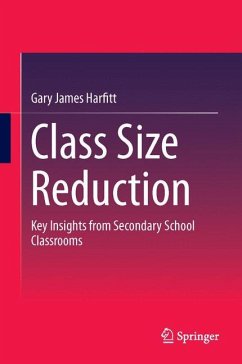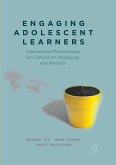This book provides a timely examination of the effects of class size reduction (CSR) on teaching and learning processes. It represents a departure in that the research covered focuses solely on the relationship between CSR and effective teaching in real secondary school classrooms. The book also presents a much-needed and powerful student voice on the impact of class size reduction on teaching and learning processes. It conceptualises the effects of class size on teaching and learning processes in secondary school classrooms, which are another under-researched perspective in this field. Drawing on multiple case studies concerning teaching and learning processes in large and small Hong Kong secondary-school classes, it highlights the qualitative differences in teaching and learning processes. On the basis of those studies, the book argues for a more purposeful, dynamic approach to education for teachers working in small or reduced-size classes.
Bitte wählen Sie Ihr Anliegen aus.
Rechnungen
Retourenschein anfordern
Bestellstatus
Storno








